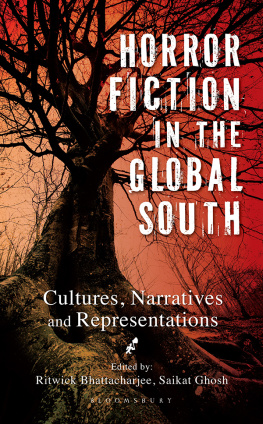FOR INFORMATION:
SAGE Publications, Inc.
2455 Teller Road
Thousand Oaks, California 91320
E-mail: order@sagepub.com
SAGE Publications Ltd.
1 Olivers Yard
55 City Road
London EC1Y 1SP
United Kingdom
SAGE Publications India Pvt. Ltd.
B 1/I 1 Mohan Cooperative Industrial Area
Mathura Road, New Delhi 110 044
India
SAGE Publications Asia-Pacific Pte. Ltd.
3 Church Street
#10-04 Samsung Hub
Singapore 049483
Copyright 2016 by SAGE Publications, Inc.
All rights reserved. No part of this book may be reproduced or utilized in any form or by any means, electronic or mechanical, including photocopying, recording, or by any information storage and retrieval system, without permission in writing from the publisher.
All trademarks depicted within this book, including trademarks appearing as part of a screenshot, figure, or other image, are included solely for the purpose of illustration and are the property of their respective holders. The use of the trademarks in no way indicates any relationship with, or endorsement by, the holders of said trademarks.
Printed in the United States of America
A catalog record of this book is available from the Library of Congress.
ISBN: 978-1-4833-4007-4
This book is printed on acid-free paper.
15 16 17 18 19 10 9 8 7 6 5 4 3 2 1
Acquisitions Editor: Maggie Stanley
Associate Editor: Abbie Rickard
Digital Content Editor: Katie Bierach
Editorial Assistant: Nicole Mangona
Production Editor: Melanie Birdsall
Copy Editor: Deanna Noga
Typesetter: C&M Digitals (P) Ltd.
Proofreader: Jeff Bryant
Indexer: Karen Wiley
Cover Designer: Gail Buschman
Marketing Manager: Liz Thornton
Detailed Contents Note: With the exception of Chapters 1, 29, and 38, the major subheadings in each chapter highlight each of the key features of the specific cultural metaphor, and each key feature is then used to illustrate how the cultural metaphor dynamically plays out in each national culture.
Preface Understanding Cultures in Depth
If we are right in suggesting that our conceptual system is largely metaphorical, then the way we think, what we experience, and what we do every day is very much a matter of metaphor.
Lakoff and Johnson (1980, p. 1)
The major emphasis in this book is on an in-depth understanding of a culture through the use of the cultural metaphor, which is any activity, phenomenon, or institution that members of a given culture consider important and with which they identify emotionally and/or cognitively (e.g., the Turkish coffeehouse and the Chinese family altar). As such, the metaphor represents all or most of the underlying values expressive of the culture itself.
Very frequently outsiders have a difficult time relating to and/or understanding a specific cultural metaphor, such as American football, and the underlying values of a culture that it expresses. This book is designed to address this difficulty. Culture allows us to fill in the blanks, often either semiconsciously or unconsciously, when action is required, and cultural metaphors help us see the values leading to action. This is probably the most interesting feature of culture (see Brislin, 1993; Triandis, 2002). Cultural metaphors, the basis of this book, represent an effective way to profile and to learn about ethnic cultures, national cultures, the diffusion of a base culture such as the Chinese culture and the English culture across nations, continental cultures, and even diversity within a nation, as the description of kaleidoscopic diversity in India in demonstrates.
It is critical to realize that the approach in this book is systematic. Frequently metaphors are used carelessly, e.g., football is as good an image of the United States that an outsider is able to obtain. But most metaphorical studies just say something like the following: If an outsider understands football, he or she has a good understanding of what the United States is all about. However, there is rarely, if ever, an attempt to describe the unique or distinctive features of football that will help facilitate this understanding. In contrast, this book describes eight unique or distinctive features of football that are easily visible in many, if not all, aspects of U.S. American life. For this reason we have created both a Brief Contents where the chapter titles only are highlighted and a Detailed Contents outlining such features. We also note, in support of the opening quote and the work of many others, that the average person uses a metaphor every 10 to 25 words (Geary, 2011). It is our goal to show how they should be used properly and systematically. To our knowledge, no one in the cross-cultural area or even outside it has ever attempted to complete such an ambitious project.
In . The bipolar or dimensional approach comes from cross-cultural psychology and cross-cultural management.
The first edition of this book in 1994 had 17 chapters describing 17 cultural metaphors, but the chapters were not logically fitted into parts. This sixth edition includes 14 major parts, 38 chapters, and 3 new parts: .
We have focused on Scandinavian egalitarian cultures separately from other egalitarian cultures such as Canada, because they are unique in several ways. For example, they tend to base fines for traffic violations not only on the severity of the action but also on violators income levels, which results in wide variances. Hence two parts are devoted to egalitarian cultures rather than only one part. Similarly, as in the fourth edition, a new, separate part of the book focuses on India. As such, there are three chapters on Chinese culture, as in the third editioncovering China at home, Chinese around the world, and Singaporeand two chapters devoted to India as in the fifth edition. We have also updated all chapters and have significantly rewritten several of them.
When Martin Gannon began work on cultural metaphors in 1987, there was a concern that there would be an automatic negative reaction to the concept, because cultural metaphors are related to stereotypes. From the 1950s until about 1990, the typical reaction to any generalization about groups was That is a stereotype, and the clear meaning was that such a generalization was biased to the point of being unuseful. As explained in , however, humans use such generalizations automatically, and some stereotypes are legitimate whereas others are not. Clearly, one illegitimate stereotype is a generalization that allows no exceptions. Cultural metaphors, on the other hand, are probabilistic statements that apply to a group but not to every individual within it. And, as the introductory quote from Lakoff and Johnson points out, humans tend to learn through the use of metaphors.















